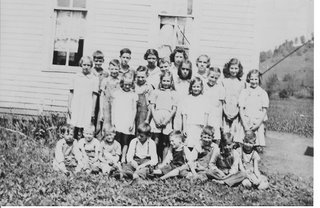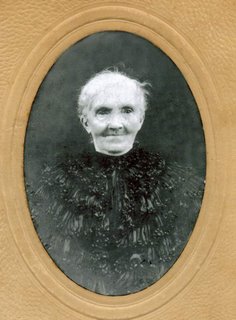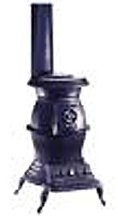1850s, came with his parents Isaac and Polly (Spaunagle) Bennett to settle on Clover Fork. In the 1860 census he was one of five kids were still at home: Adam, 23 years, our George, 18, Margaret, 16, Susan, 13, and David, 10.
Like his neighbors, George served the Confederate cause during the Civil War.
A large Bennett family in central Lewis County seems to be unrelated to our Bennetts. The Bennetts north of Orlando most likely have English origins. It has been suggested that our Bennetts had Germanic roots.
George married Anne Barb (or Barbe). Reports vary on the names and number of children. Two that we are certain of are Sarah and David. Pictured below to the left is George and Anne's oldest child, daughter Sarah, b. 1870, with her husband Gideon Skinner and their five oldest children taken in the very early 1900s. To the right is their son David, b. 1881, with his wife, Maycell Parmer, 
 taken in, maybe, the 1950s.
taken in, maybe, the 1950s.

 taken in, maybe, the 1950s.
taken in, maybe, the 1950s.George Washington Bennet died in 1914 at about the age of 73.
















